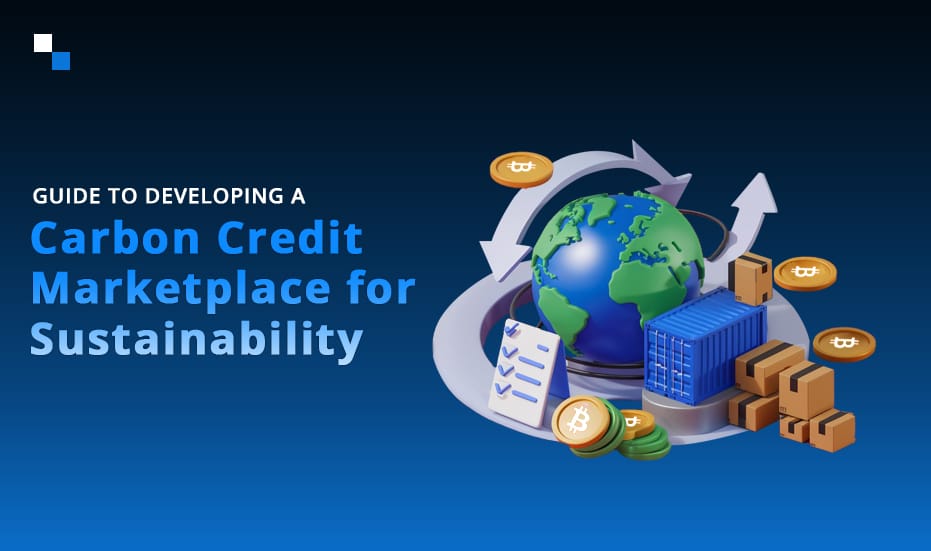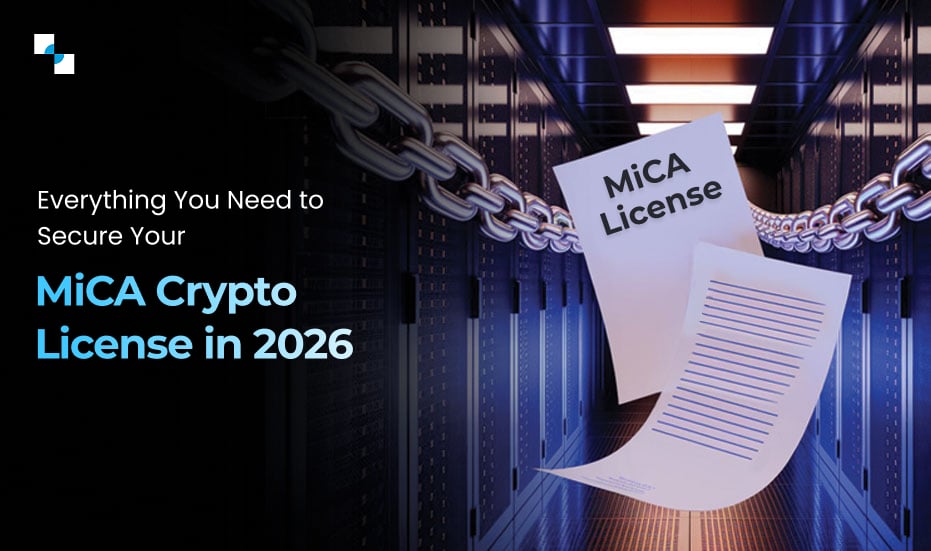Climate change has become a pressing global issue and businesses worldwide are actively exploring effective ways to combat its rapid escalation. However, achieving the monumental goal of reducing emissions and decarbonizing economies demands well-defined and effective strategies. Among all the strategies going in the market, carbon credits stand out as a reliable approach for entrepreneurs aspiring to transition into ecopreneurs. The introduction of the carbon credit system has given rise to carbon credit marketplaces—transparent, efficient platforms for buying, selling, and trading carbon credits. These marketplaces incentivize sustainability efforts and play a crucial role in accelerating the global shift toward a low-carbon economy.
This blog will delve into the key concept of carbon credit marketplace development and provide a step-by-step guide to building one. Let’s dive in!
Introduction to Carbon Credit Marketplace
Let’s first understand what carbon credits are.
Carbon credits are permits that enable the emission of a certain amount of CO2 and GHGs. One carbon credit represents the right to emit one ton of carbon dioxide, and greenhouse gases. Trading these credits helps entities offset their emissions by supporting environmental projects like renewable energy, reforestation, and carbon capture initiatives. To support seamless trading objectives, efficient carbon credit marketplaces have been developed.
“A carbon credit marketplace is a platform, that enables governments, businesses, and individuals to buy, sell and trade carbon credits. These marketplaces incentivize sustainable practices by putting a monetary value on carbon reduction.”
The carbon credit marketplace development has evolved significantly, becoming more sophisticated and accessible for businesses with ambitious sustainability targets.
The key players in the market include:
- Regulated Markets:
These are government-backed markets, such as the European Union Emissions Trading System (EU ETS), where carbon credits are bought and sold based on specific emission reduction targets.
- Voluntary Markets
These markets allow companies and individuals to purchase carbon credits on a voluntary basis, often driven by corporate sustainability goals or consumer pressure. The voluntary carbon credit marketplace development has seen significant growth as businesses increasingly aim to achieve net-zero emissions.
The rise of the voluntary market, coupled with more stringent regulations in the public sector, is driving the development of an innovative and efficient carbon credit trading platform.
Step-by-Step Guide to Blockchain-based Carbon Credit Marketplace Development
Step 1: Identify the Market Demand and Target Audience
The first and foremost step to consider in carbon credit marketplace development is to identify the market demand and understand the primary users of the platform. The target audience may include businesses and corporations, governments and NGOs, as well as individual buyers seeking to offset their carbon footprint. Understanding the needs and behaviors of your target audience is crucial, as it helps shape the carbon credit marketplace development, focusing on the ideal features and usability.
Step 2: Understand the Legal and Regulatory Framework
Carbon credit trading is heavily regulated and governed by various laws and standards. The successful carbon credit marketplace development required a better understanding of the legal landscape.
Some of the regulatory frameworks and standards one should be aware of include the Paris Agreement, compliance & voluntary carbon market, and carbon credit certification standards (Verified Carbon Standard (VCS), Gold Standard, and Climate Action Reserve (CAR)). One needs to ensure that your platform complies with these standards and integrates with existing regulatory bodies to offer valid and verified credits.
Step 3: Platform Design and Features
A successful carbon credit marketplace should be user-friendly, secure, and scalable. The key features one should consider while designing the platform include user registration and onboarding, carbon credit verification, trade and transaction management, payment gateway integration, sustainability tracking and analytics, auctions, bulk purchases, and other features, required for an efficient carbon trading software or marketplace.
The design should also be simple, scalable, and flexible as the marketplace evolves. You might also want to consider mobile and web app versions to reach a broader audience.
Step 4: Establish Partnerships with Carbon Credit Providers
Once the platform’s core structure is in place, the next step in carbon credit marketplace development involves establishing partnerships with carbon credit providers. These can include partnering with companies running carbon offset projects and third-party verification agencies, government, and regulators to ensure the legitimacy of the credits. These partnerships play a crucial role in building the credibility and trust of your carbon credit trading platform.
Step 5: Build a Robust Technology Infrastructure
The technology infrastructure should be scalable, secure, and capable of handling a large number of transactions. For this, focus on the following components-
- The implementation of blockchain technology for decentralized, secure, transparent, and immutable transactions and records of carbon credits.
- Implement two-factor authentication encryption and compliance with data protection regulations like GDPR to protect sensitive user data and financial transactions.
- The use of smart contacts helps automate carbon credit transactions, eliminate intermediaries, and ensure compliance with predefined conditions.
- Build API integrations with third-party services, such as payment gateways, carbon offset project management tools, and more.
- Implement AI tools for trend analysis, carbon credit price predictions, and insights into the best time to buy or sell credits.
Step 6: User Interface and Experience (UI/UX) Design
A good user interface (UI) and user experience (UX) design are pillars for maximum user retention and engagement. A carbon credit trading platform or marketplace should be easy to navigate, provide intuitive search functionality, and offer educational tools that help users understand the carbon credit process. Not only this, but the carbon credit marketplace should have a minimal design for easy navigation. It must include search and filter options, sort by price, project type, and other criteria. It should feature blogs, guides, and FAQs to educate users and 24*7 customer support to resolve issues quickly.
Step 7: Marketing and Community Engagement
Once the platform is up and running, it’s time to market it to your target audience. You can opt for effective marketing strategies, such as social media and influencer marketing, partnerships with sustainability-focused organizations, conduct online events, webinars, and surveys to promote your marketplace and educate your audience about the importance of carbon credits and the marketplace.
Step 8: Testing and Launch
Before launching your platform, thoroughly test it to make it free of bugs or issues. This should include bet testing, stress testing, and audits. All these audits and testing help identify vulnerabilities and strengthen the platform’s defenses. Once testing is complete, you’re ready to launch. Ensure that the launch is smooth and that users have access to all necessary resources to get started.
Step 9: Post-Launch Maintenance and Scaling
After the launch, the work doesn’t end. Continuous maintenance, updates, and scaling are necessary to make the platform effective and user-friendly. Track platform performance, user activity, and transaction volume to identify areas for improvement. Collect feedback from users to make improvements and add new features. As your marketplace grows, scale your infrastructure to accommodate more users and transactions.
Closing Thoughts
Carbon credit marketplace development in 2025 requires careful planning, a solid understanding of the market, and robust technological infrastructure. Following the step-by-step carbon credit marketplace development guide can help you build a trusted, transparent, and efficient platform that contributes to global efforts to combat climate change. Alongside this guide, you’ll need the support of skilled and experienced blockchain experts to guide you through the journey and deliver the outcomes necessary to achieve your sustainability goals.
Antier is a reliable partner for your seamless project success!
Backed by 700+ blockchain engineers with sheer expertise in carbon credit development, Antier stands as a trusted leader in the industry. We at Antier help startups and enterprises to access the robust carbon credit marketplace that promises a seamless carbon credit trading experience.
If you’re seeking seasoned blockchain experts to develop a powerful and reliable carbon credit trading marketplace, reach out to our carbon credit development company today!








